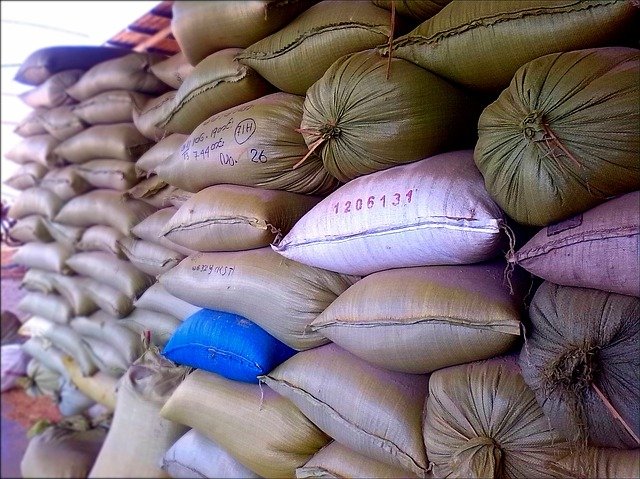Food for thought
David Beasley, executive director, World Food Programme, explains to editor John Kirton the crucial role the organisation plays in ensuring people worldwide have access to food – and the life-threatening challenges brought to supply chains by COVID-19 and enduring conflicts
In what ways has the rapid spread of COVID-19 affect the World Food Programme’s work?
We are facing a hunger pandemic, a crisis of hunger that could reach biblical proportions. We estimate that the number of people facing a crisis level of hunger could rise from about 150 million to 270 million by the end of this year.
This level isn’t just people being simply hungry. These are people who do not know where their next meal is coming from, who literally are on the brink of starvation. And it is hitting every low- or middle-income country where we work. Spikes of hunger are already evident in West and Central Africa and Southern Africa, and the increase is very large – about 270% – in Latin America.
It’s nothing short of catastrophic. Even right now, 30 million people depend on the WFP just to stay alive. They have no other access to food. If COVID-19 leads to funding shortages for the WFP or creates other reasons that prevent us from reaching those people, 300,000 people could starve to death every single day over a three-month period. In a worst-case scenario, we could be looking at famine in about three dozen countries. In fact, by August 2020 in 10 countries we already had more than one million people per country on the verge of starvation.
To meet this challenge, we need the largest humanitarian response in history. We are gearing up to help as many as 138 million people, about 40 million more than we helped in 2019. But just to meet this unprecedented crisis requires nearly $5 billion over the second half of the year.
How are violent conflicts and resulting mass migration flows in countries such as Syria creating new demands for the WFP’s services, and challenges to its ability to meet those demands?
Conflict is the biggest factor in the rise of hunger over the past three years. Of the more than 900 million people in the world facing hunger, 60% live in conflict-affected countries. These are places such as Syria and Yemen, where seemingly unending war is not only driving up hunger but also setting back human progress for generations. The worsening conflicts in South Sudan and the Central Sahel were already likely to increase hunger in 2020 even before COVID-19.
United Nations secretary-general António Guterres has called for a global ceasefire, and I must say that of all the actions needed, ending wars would immediately make the most difference in our quest to end hunger.
How is food security now harmed by outbreaks of famine, natural disasters and pests such as locusts?
There have been no declared famines. But the other issues you cite are major contributors to food insecurity. And then adding COVID-19 to the mix creates a perfect storm that threatens to become a global humanitarian catastrophe.
In what ways is affordable, accessible, appropriate, nutritious food essential for human health and development, in ways that support the Sustainable Development Goals?
SDG 2 – zero hunger – and SDG 17, which is sustainable development through partnerships, are in my opinion the critical linchpins to all the SDGs. A country cannot develop well without being able to feed itself. Children cannot grow, their brains do not develop enough to learn, and then the entire country is set back in its effort to become more prosperous. Education, economic growth, resilience against the impact of climate shocks – improvement in all these areas comes down to food security.
How can G7 leaders best help?
The G7 leaders represent countries that donate the vast majority of the WFP’s funding, and they are already strong supporters of the work we do. We know that all of them are working hard to get economic activity going back in their home countries.
And we are working hand in glove with them to respond to this crisis. If the pandemic has taught us anything, it’s that we are all connected and the world is only as strong as its weakest health system. As hard as the pandemic is hurting developed countries, it is hurting already vulnerable people the hardest. We need to help them where they live now, so they don’t feel forced to migrate and strain other economies even more. People don’t want to leave home, but they’ll do what it takes to find food for their families.
One thing many people do not know about the WFP is that we are the logistics arm of the humanitarian world. That’s even more important now, with limits on cross-border travel in some areas and the steep decline in commercial air travel.
That’s why we’re working with the G7 leaders and others to also obtain money to set up a network of logistics hubs and transport systems to keep humanitarian supply chains moving around the world. These hubs provide field hospitals and medical evacuations to the front-line humanitarian and health workers, as needed and strategically.
In the big picture, I want to say that in my three years at the WFP I have often had to reach out to G7 leaders to help the most vulnerable around the world. They’ve always taken my call and they’ve stepped up to help. Now, more than ever, we need that generosity to respond to this unprecedented crisis.
I believe they will, so we can ensure that those who stand to lose the most at least have a chance at survival.












